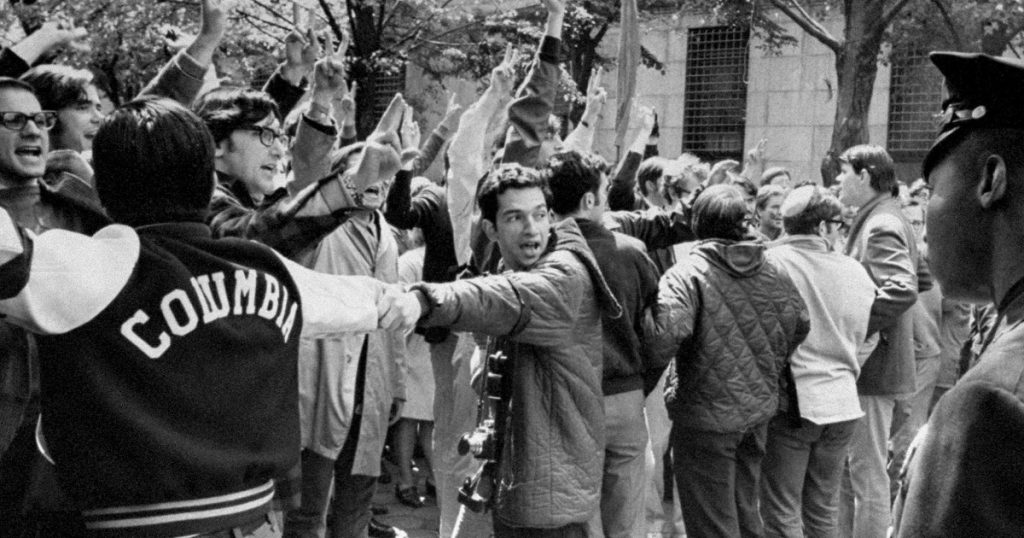Pro-Palestinian activists at Columbia University are demanding that the administration divest from corporations that may be profiting from the war in Gaza, as well as demanding more transparency in the university’s investments. This comes as Israel declared war on Hamas militants in Gaza following a terror attack, resulting in the deaths of over 1,200 people. The military operations in Gaza have led to the deaths of more than 33,000 people, as reported by local health authorities. The situation has led to protests and clashes with law enforcement, with the New York Police Department arresting over 100 people at Columbia, including the daughter of Rep. Ilhan Omar.
The recent protests and clashes at Columbia have brought back memories of the turmoil that occurred in 1968 when police officers cleared five buildings that had been occupied for a week. Nearly 700 people were arrested, and 100 were injured during the incident, with faculty members also being injured. The police action was described as a “brutal bloody show of strength” by a news report at the time. Protests in 1968 involved building occupations and strikes that were not peaceful, with deans being held captive and faculty members trying to protect students from violence. Some who were involved in the 1968 demonstrations noted that the clashes were much more violent than the recent protests.
Experts in campus security are urging law enforcement officers to exercise caution and be mindful of the potential for situations to escalate out of control during protests at Columbia University. The groups involved in the protests have warned against inciting violence similar to what occurred at Kent State University and Jackson State College in 1970 during anti-war and civil rights protests. Activists draw parallels between the recent protests at Columbia and past student movements, citing the takeover of Hamilton Hall as a continuation of the 1968, 1985, and 1992 student movements at the university.
The demands made by the demonstrators at Columbia echo past movements, such as in 1985 when students occupied a building to call for divestment from companies doing business in apartheid-era South Africa. The protests also bring to mind a similar incident in 1992 when students seized a building to oppose the conversion of a ballroom where Malcolm X had been assassinated into a biomedical research center. The recent protests at Columbia are part of a larger movement pushing for accountability and transparency in university investments, especially when it comes to conflicts like the one in Gaza. The clashes with law enforcement and calls for divestment and transparency highlight ongoing tensions and activism on college campuses.


